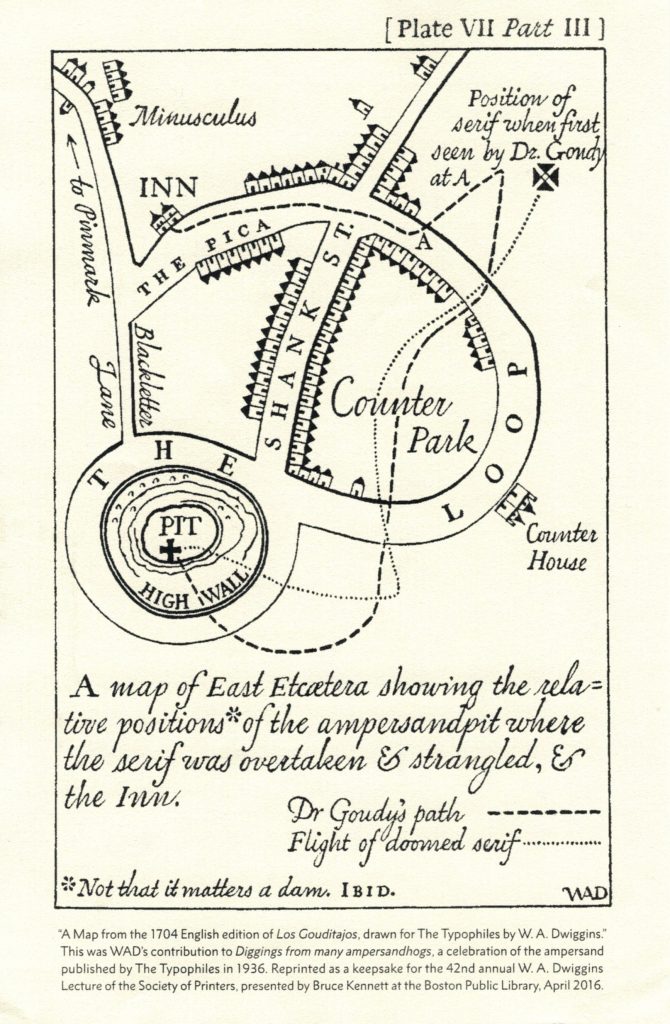WAD Happened September 8, 2022
Thursday, September 8, 2022, World Ampersand Day dawned for the first time in history. The date gained fame in 2015 when typographer and graphic designer Chaz DeSimone, founder and principal of Los-Angeles-based DeSimone Design, discovered the National Day Calendar and declared September 8 National Ampersand Day.
In 2011, DeSinone had created a series of ampersand art posters as a marketing campaign for his design business. Positive feedback encouraged him to turn the posters into an ongoing series he named AmperArt. Since AmperArt’s launch, he has produced an ampersand poster a month and plans to do so, he says, “as long as I can push a pencil & a pixel.” Mid-September 2022, he produced his 180th poster.
DeSimone’s design and typography work give him intimate knowledge of ampersand forms, and he observed that some ampersands resemble letters. While pondering what date to choose for National Ampersand Day, DeSimone saw that certain ampersands could spell “September 8.” Here is how, courtesy of his website:

September 8 spelled with ampersands by design professional Chaz DeSimone.
As DeSimone’s design business grew, he realized that the ampersand is a worldwide phenomenon. He called the National Calendar Day people, negotiated a name-change to World Ampersand Day, and expanded September 8 into a worldwide celebration of everyone’s favorite character.
Two of the many positives arising from the upgrade to World Ampersand Day:
- WAD is a more human acronym than NAD. NAD has no meaning beyond an abbreviation, but we’ve known about wads all our lives: wads of bubble gum, wads of paper, wads of cotton, wads of money.
- The most familiar WAD to book, type, and graphic designers is William Addison Dwiggins (1880-1956), artist, designer, typographer, calligrapher, writer, woodcarver, and marionettist.
The Journal of Decorative and Propaganda Arts (DAPA, Winter 1988, p. 111) tells us that Dwiggins was born in Martinsville, Ohio in 1880, attended the Frank Holme School of Illustration in Chicago, and studied there with Frederic William Goudy, another of America’s foremost type designers and printers. For several years Dwiggins earned a living in advertising but was “unswerving in his desire to produce books.”
In New York, in 1930, a group of men who had become acquainted through their work in typography, printing, and books, met weekly for lunch. They loved talking shop, sharing enthusiasms, and swapping samples of their work.
Early on, leadership of the group fell to Paul Arthur Bennett, typographic layout director, and later, promotion manager of the Mergenthaler Linotype Company. Sometime in 1933, regular Arthur Rushmore, book designer for Harper & Brothers, proposed calling the group the Typophiles.
In the spring of 1936, some Typophiles suggested they do an annual book for distribution at Christmas. “Perversely,” Bennett wrote, “we decided that this Christmas book would [contain] nothing about Christmas.”
“Instead, we selected that innocent, unsuspecting, lonesome little character, the Ampersand.”
Bennett created a pamphlet to encourage contributions. In the pamphlet’s fourth paragraph he wrote, “It is true that no one we’ve discovered knows much about Ampersands. … No important or unimportant work on the subject seems to have been published. It seems high time one appeared.”
The product of Bennett’s call for contributions was a volume titled Diggings from Many Ampersandhogs. Diggings was the first book exclusively about the ampersand and contains 35 “calligraphic, typographic, and bibliographic rambles” through ampersand lore.
William Addison Dwiggins’s contribution to Diggings was “A Map from the 1704 English Edition of Los Gouditajos,” complete with an “ampersandpit.” Dwiggins’s satirical illustration poked fun at his former teacher, Frederic Goudy, another contributor to the book.
Diggings from Many Ampersandhogs was intended for distribution at the 1936 Typophile Annual Christmas Party. “Typical of Typophilic casualness,” wrote Bennett, the book “wasn’t ready until January 9, 1937.”
The caption to the Dwiggins map reproduction below says it was “Reprinted as a keepsake for the 42ndannual W. A. Dwiggins Lecture of the Society of Printers, presented by Bruce Kennett at the Boston Public Library, April 2016.” I cherish this keepsake as a gift from eminent typographer Matthew Carter.
Long live the Ampersand!

William Addison Dwiggins contribution to the ©1937 book Diggings From Many Ampersandhogs (New York: The Typophiles).